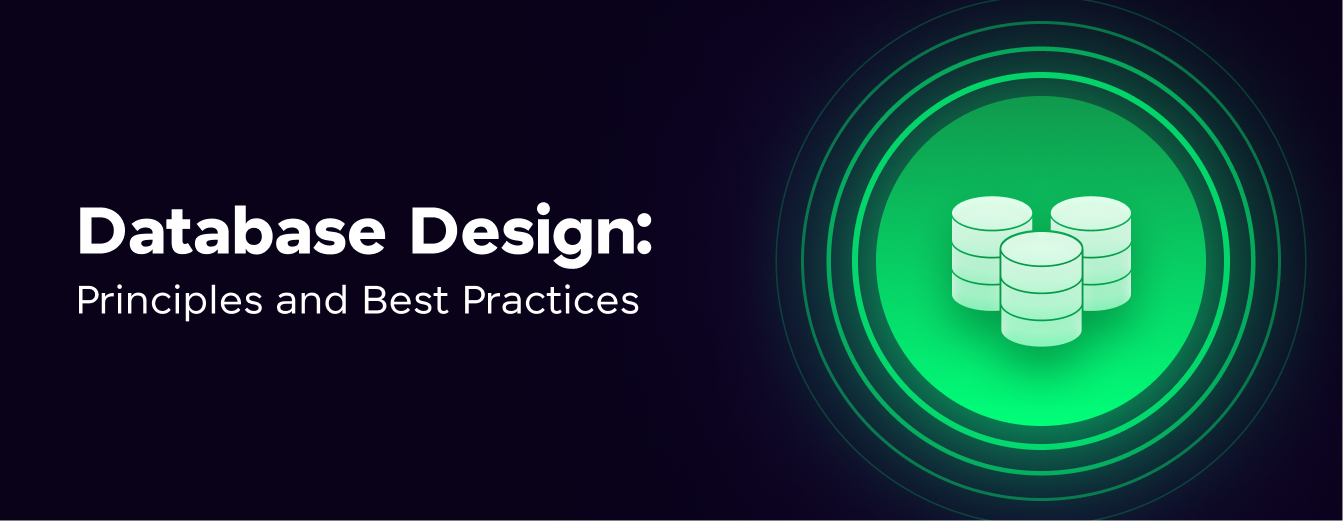
Database Design: Principles and Best Practices
Mar 26, 2025 5 Min Read 5850 Views
(Last Updated)
In today’s data-driven world, databases are the backbone of almost every application, from small business solutions to large-scale enterprise systems. The efficiency, reliability, and performance of these applications hinge on the quality of their underlying database design. A well-designed database not only ensures data integrity and reduces redundancy but also optimizes performance and supports scalability.
However, crafting a robust database design is not a straightforward task. It requires a deep understanding of fundamental principles and adherence to best practices that guide the process. Poor database design can lead to numerous issues, such as inefficient queries, data inconsistency, and difficulties in scaling the system as your data grows.
This blog aims to explain the complexities of database design by exploring essential principles and best practices. Understanding these concepts is important for building effective, high-performance databases. Let’s begin!
Table of contents
- What is Database Design?
- Database Design: Principles and Best Practices
- Key Principles of Database Design
- Best Practices for Database Design
- Implementation Tips
- Conclusion
- FAQs
- Why is normalization important in database design?
- What are some common mistakes to avoid in database design?
- How do I choose the right database management system (DBMS) for my needs?
What is Database Design?
Database design is the process of creating a structured and efficient system for organizing, storing, and managing data in a database. It involves:
- Identifying the purpose and requirements of the database
- Determining what data needs to be stored
- Organizing that data into tables and establishing relationships between them
- Defining data types and constraints
- Optimizing the structure for performance and data integrity
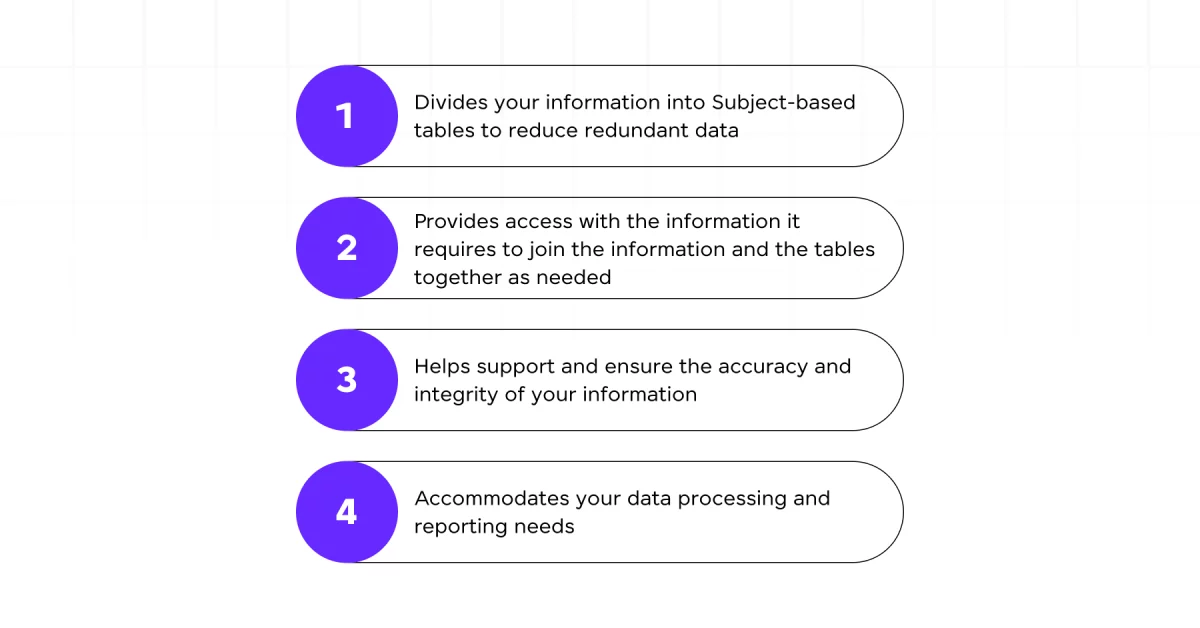
Key aspects of database design include:
- Normalization: Reducing data redundancy and improving data integrity
- Entity-Relationship modeling: Visualizing data structures and relationships
- Choosing appropriate primary and foreign keys
- Indexing for improved query performance
- Considering scalability and future data needs
Good database design is important for creating systems that are efficient, maintainable, and able to support the needs of applications and users effectively.
Must Know About How Does Database Servers Work? Explained with Illustrations
Before we move to the next part, you should have a deeper knowledge of data engineering concepts. You can consider enrolling yourself in GUVI’s Data Engineering Career Program, which lets you gain practical experience by developing real-world projects and covers technologies including data cleaning, data visualization, Infrastructure as code, database, shell script, orchestration, cloud services, and many more.
Additionally, if you would like to explore Data Engineering and Big Data through a Self-paced course, try GUVI’s Data Engineering and Big Data self-paced course.
After establishing a foundational understanding of database design, let’s explore the core principles and best practices that guide the creation of robust, efficient, and scalable databases.
Database Design: Principles and Best Practices
Let’s explore the key principles of database design, best practices to follow, and a few important implementation tips.
Key Principles of Database Design
Database design is founded on several fundamental principles that guide the creation of efficient, scalable, and maintainable database systems. Understanding and applying these principles is essential for developing robust databases that can withstand the test of time and evolving business needs.
1) Data Integrity
Data integrity is important for any reliable database system. It ensures that the data stored in the database is accurate, consistent, and trustworthy. There are several aspects of data integrity to consider:
- Entity Integrity: Each row in a table should be uniquely identifiable using a primary key.
- Referential Integrity: Relationships between tables should be maintained through foreign key constraints.
- Domain Integrity: Data values should conform to defined formats, ranges, or rules.
Implementing proper constraints, validation rules, and data quality checks helps maintain data integrity throughout the database lifecycle.
2) Normalization
Normalization is the process of organizing data to minimize redundancy and dependency. It involves breaking down large tables into smaller, more manageable ones and establishing relationships between them. The main goals of normalization are:
- Eliminating redundant data
- Ensuring data dependencies make sense
- Simplifying database maintenance
Typically, databases are normalized to the third normal form (3NF), which addresses the most common issues. However, higher normal forms exist for more specialized cases.
3) Scalability
A well-designed database should be able to grow and adapt to increasing data volumes and user loads without significant performance degradation. Scalability considerations include:
- Horizontal scaling: Adding more servers to distribute the load
- Vertical scaling: Upgrading hardware resources on existing servers
- Partitioning: Dividing large tables into smaller, more manageable chunks
- Indexing strategies: Optimizing query performance as data volume grows
Must Explore: Horizontal vs Vertical Scaling for Efficient System Design
4) Performance
Database performance is critical for ensuring smooth operations and user satisfaction. Key performance considerations include:
- Query optimization: Structuring queries efficiently
- Indexing: Creating appropriate indexes to speed up data retrieval
- Denormalization: Strategically introducing redundancy to improve read performance
- Caching: Implementing caching mechanisms to reduce database load
5) Security
Protecting sensitive data is important in database design. Security principles to consider include:
- Access control: Implementing user authentication and authorization
- Encryption: Securing data at rest and in transit
- Auditing: Tracking database access and changes
- Backup and recovery: Ensuring data can be restored in case of failures
6) Flexibility and Extensibility
Business requirements often change over time, and a well-designed database should be able to accommodate these changes with minimal disruption. This involves:
- Modular design: Creating loosely coupled components
- Abstraction layers: Separating business logic from data access
- Version control: Managing schema changes and migrations
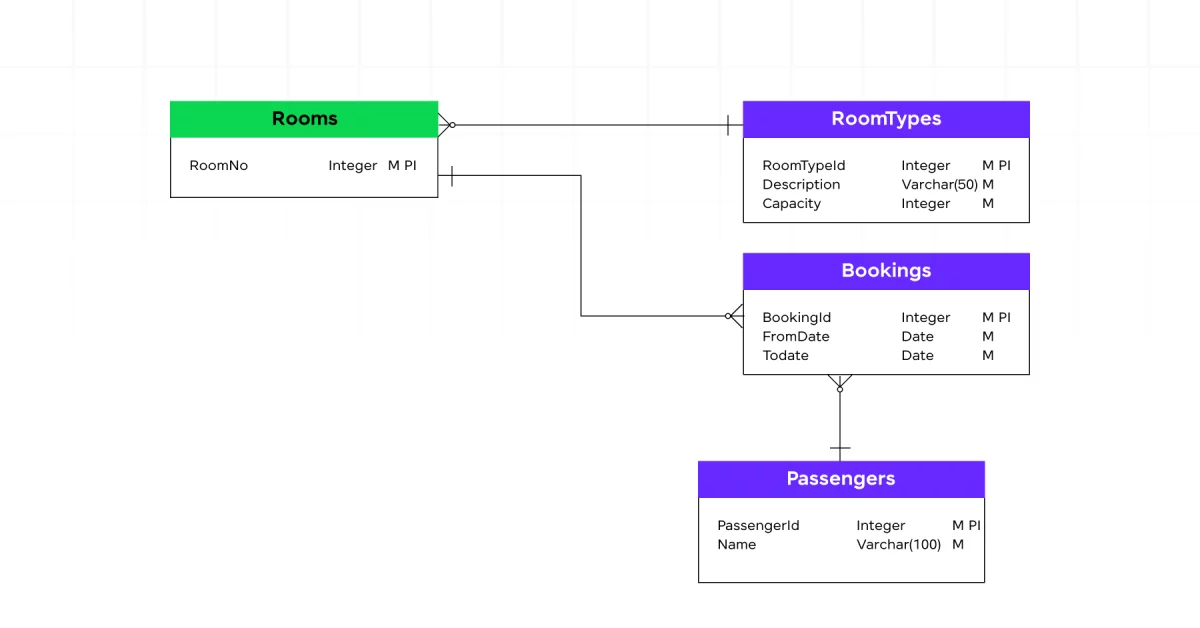
Also Read: Top 9 Data Engineer Skills You Should Know
Best Practices for Database Design
Adhering to best practices helps ensure that your database design is robust, efficient, and maintainable. Here are some key best practices to follow:
1) Start with a Clear Understanding of Requirements
Before getting into the technical aspects of database design, it’s important to have a thorough understanding of the business requirements and use cases. This involves:
- Conducting stakeholder interviews
- Analyzing existing systems and data flows
- Documenting functional and non-functional requirements
- Creating user stories and use cases
A clear understanding of requirements helps in making informed design decisions and avoiding costly changes later in the development process.
Also Read: Data Transformers: Roles and Responsibilities of Data Engineers
2) Create a Conceptual Data Model
A conceptual data model provides a high-level view of the data entities and their relationships. This step helps in:
- Identifying main data entities
- Establishing relationships between entities
- Defining cardinality (one-to-one, one-to-many, many-to-many)
- Validating the model with stakeholders
Tools like Entity-Relationship Diagrams (ERDs) are useful for creating and communicating conceptual data models.
3) Develop a Logical Data Model
The logical data model builds upon the conceptual model by adding more detail and structure. This stage involves:
- Defining attributes for each entity
- Specifying data types and constraints
- Normalizing the data structure
- Resolving many-to-many relationships
The logical model serves as a blueprint for the physical database implementation.
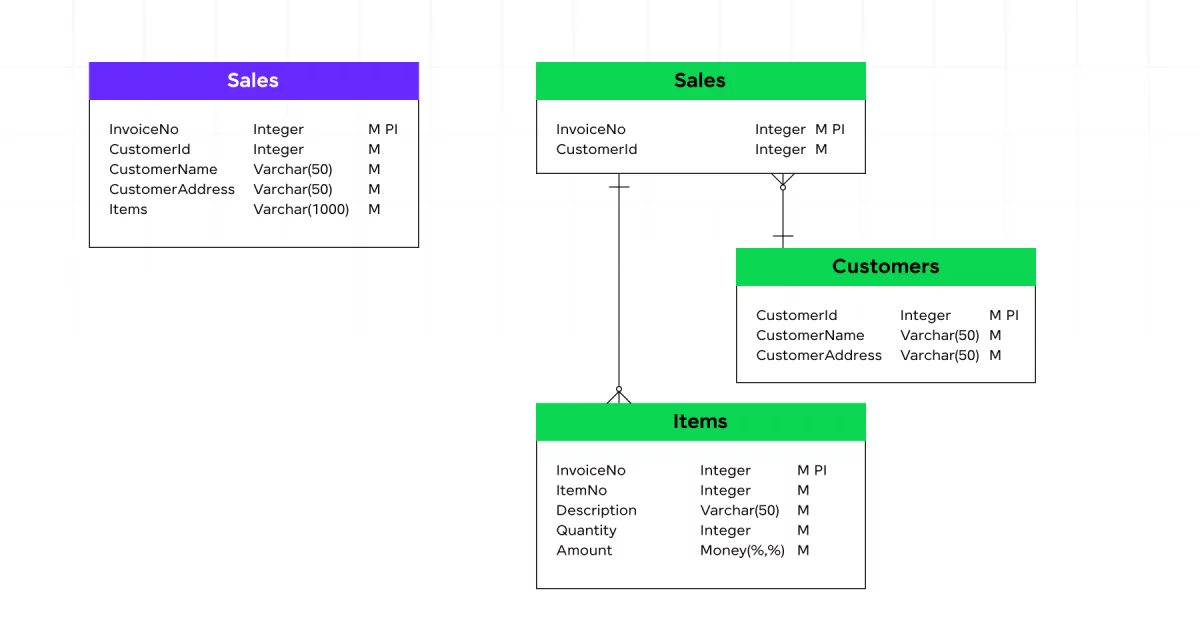
Also Read: Implementing Multi-Tenant Architecture in Web Applications
4) Choose Appropriate Data Types
Selecting the right data types for attributes is important for data integrity and performance. Consider:
- Using the smallest data type that can accommodate the expected data
- Using specialized types (e.g., date, time, boolean) where appropriate
- Considering storage and performance implications of different data types
5) Implement Proper Indexing
Indexes can significantly improve query performance but should be used judiciously. Best practices for indexing include:
- Creating indexes on frequently queried columns
- Avoiding over-indexing, which can slow down write operations
- Regularly analyzing and optimizing index usage
- Considering composite indexes for multi-column queries
6) Use Stored Procedures and Views
Stored procedures and views can enhance performance, security, and maintainability:
- Stored procedures encapsulate complex logic and can be optimized by the database engine
- Views provide a layer of abstraction and can simplify complex queries
- Both can be used to implement fine-grained access control
7) Implement Proper Naming Conventions
Consistent and meaningful naming conventions improve readability and maintainability:
- Use clear, descriptive names for tables, columns, and other database objects
- Follow a consistent capitalization style (e.g., snake_case or CamelCase)
- Avoid reserved words and special characters in names
- Use prefixes or suffixes to group related objects
Also Read: Data Engineering Career Roadmap: 7 Things You Should Know About!
8) Document Your Design
Thorough documentation is essential for long-term maintainability:
- Create and maintain up-to-date ERDs
- Document table structures, relationships, and constraints
- Explain the rationale behind key design decisions
- Keep a change log to track schema evolution
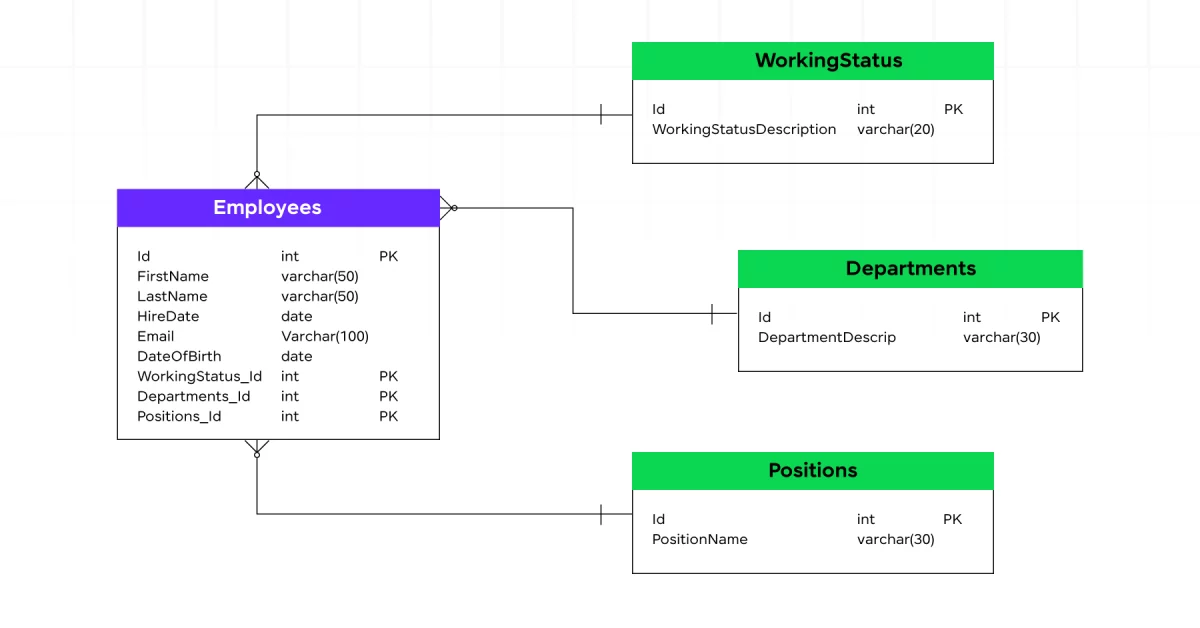
Also Read: MongoDB vs. MySQL: Which Database Should You Learn?
Implementation Tips
Translating your database design into a working system requires careful planning and execution. Here are some tips to ensure a smooth implementation:
1) Choose the Right Database Management System (DBMS)
Selecting the appropriate DBMS is important for meeting your project’s requirements:
- Consider factors such as scalability, performance, cost, and available features
- Evaluate relational (e.g., PostgreSQL, MySQL) vs. NoSQL (e.g., MongoDB, Cassandra) options based on your data structure and access patterns
- Consider cloud-based solutions for easier scalability and management
2) Plan for Data Migration
If you’re replacing an existing system, plan carefully for data migration:
- Analyze the existing data structure and quality
- Develop a migration strategy (e.g., big bang vs. phased approach)
- Create and test data transformation scripts
- Plan for downtime and communicate with stakeholders
3) Implement Data Validation and Constraints
Enforce data integrity at the database level:
- Use CHECK constraints to enforce domain rules
- Implement FOREIGN KEY constraints for referential integrity
- Use UNIQUE constraints where appropriate
- Consider using triggers for complex validation logic
4) Optimize for Common Query Patterns
Analyze expected query patterns and optimize accordingly:
- Create appropriate indexes based on common WHERE clauses and JOIN conditions
- Consider materialized views for frequently accessed aggregated data
- Use partitioning for very large tables to improve query performance
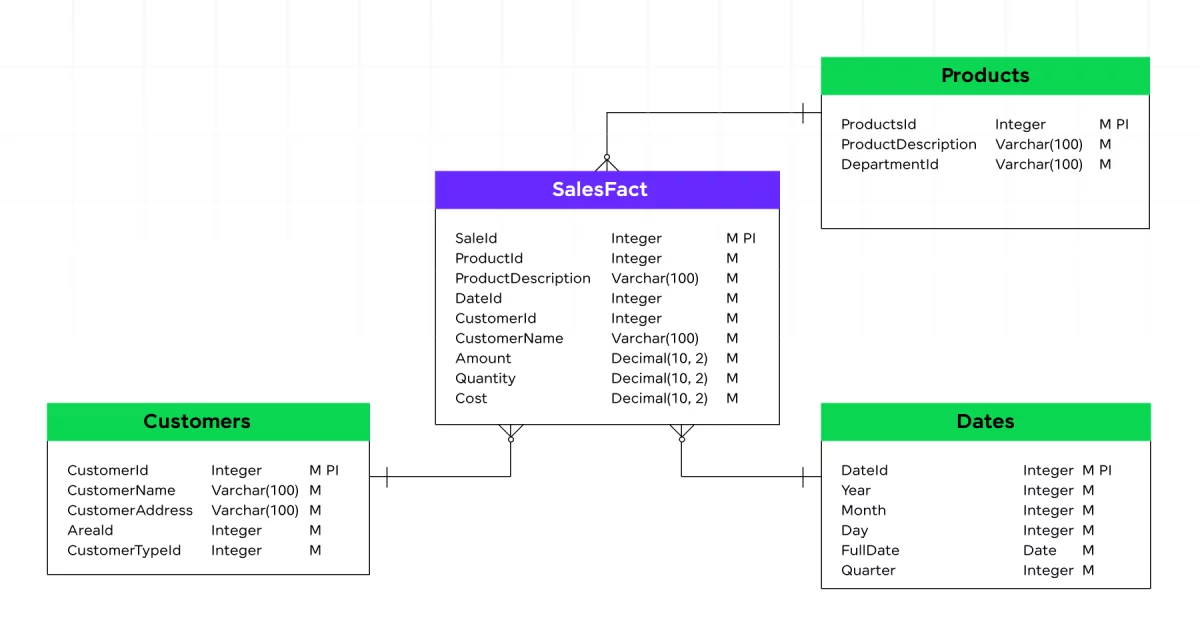
Also Explore: 15 Most Common SQL Queries with Examples
5) Implement Backup and Recovery Procedures
Ensure data safety and business continuity:
- Set up regular automated backups
- Test restore procedures periodically
- Implement point-in-time recovery capabilities
- Consider replication for high-availability
6) Monitor and Tune Performance
Continuously monitor and optimize database performance:
- Use database profiling tools to identify slow queries
- Regularly analyze query execution plans
- Adjust server configuration parameters as needed
- Consider using connection pooling for better resource utilization
7) Implement Security Measures
Protect your data from unauthorized access and breaches:
- Use strong authentication mechanisms
- Implement role-based access control
- Encrypt sensitive data at rest and in transit
- Regularly audit and monitor database access
8) Plan for Scalability
Design your database with future growth in mind:
- Use appropriate data types that can accommodate growing values
- Implement vertical partitioning (splitting tables by columns) or horizontal partitioning (sharding) for very large tables
- Consider implementing a caching layer to reduce the database load
- Plan for potential schema changes and develop a versioning strategy
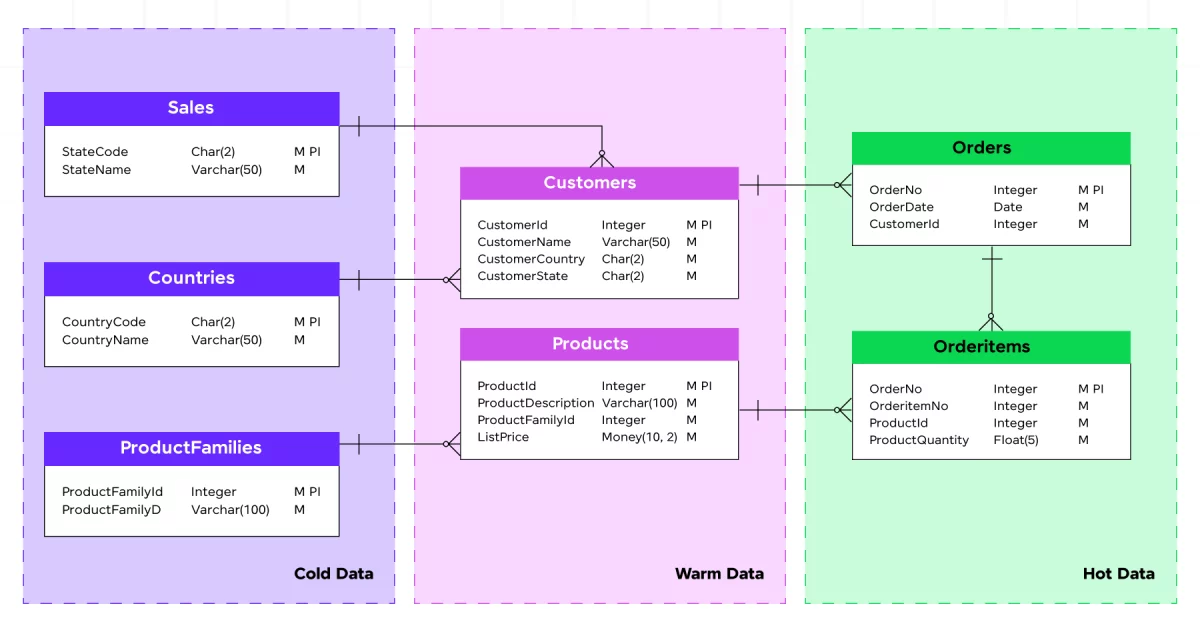
Kickstart your career by enrolling in GUVI’s Data Engineering Career Program where you will master technologies like data cleaning, data visualization, Infrastructure as code, database, shell script, orchestration, and cloud services, and build interesting real-life cloud computing projects.
Alternatively, if you want to explore Data Engineering and Big Data through a Self-paced course, try GUVI’s Data Engineering and Big Data Self-Paced course.
Conclusion
Effective database design is a critical foundation for building robust, scalable, and efficient information systems. By adhering to key principles such as data integrity, normalization, and scalability, and following best practices in implementation, organizations can create database systems that not only meet current needs but also adapt to future requirements.
The process of database design is iterative and requires continuous refinement as business needs evolve. Regular performance monitoring, security audits, and schema optimizations are essential for maintaining a healthy database system over time.
Successful database design goes beyond technical considerations. It requires a deep understanding of business requirements, careful planning, and a holistic approach that considers factors such as data privacy, regulatory compliance, and future scalability.
By investing time and resources in proper database design, organizations can build a solid foundation for their data-driven initiatives, enabling better decision-making, improved operational efficiency, and enhanced customer experiences.
Also Read: A Comprehensive Guide on DBMS Trends in 2024
FAQs
Normalization is important in database design as it organizes data to minimize redundancy and dependency, ensuring accuracy and consistency. It involves structuring a database into smaller, related tables, which enhances query performance and simplifies maintenance. Proper normalization reduces data duplication, making updates and deletions more straightforward.
Common mistakes in database design include a lack of proper indexing, leading to slow queries, and poor normalization balance, resulting in either complex queries or redundant data. Ignoring future scalability can cause significant rework as data grows. Poor documentation can create confusion and errors over time, especially in large teams.
Choosing the right DBMS involves evaluating your data structure, scalability needs, and performance requirements. Relational databases like MySQL are suited for structured data, while NoSQL options like MongoDB handle unstructured data better. Consider the cost, including licensing and maintenance, and the strength of community support.

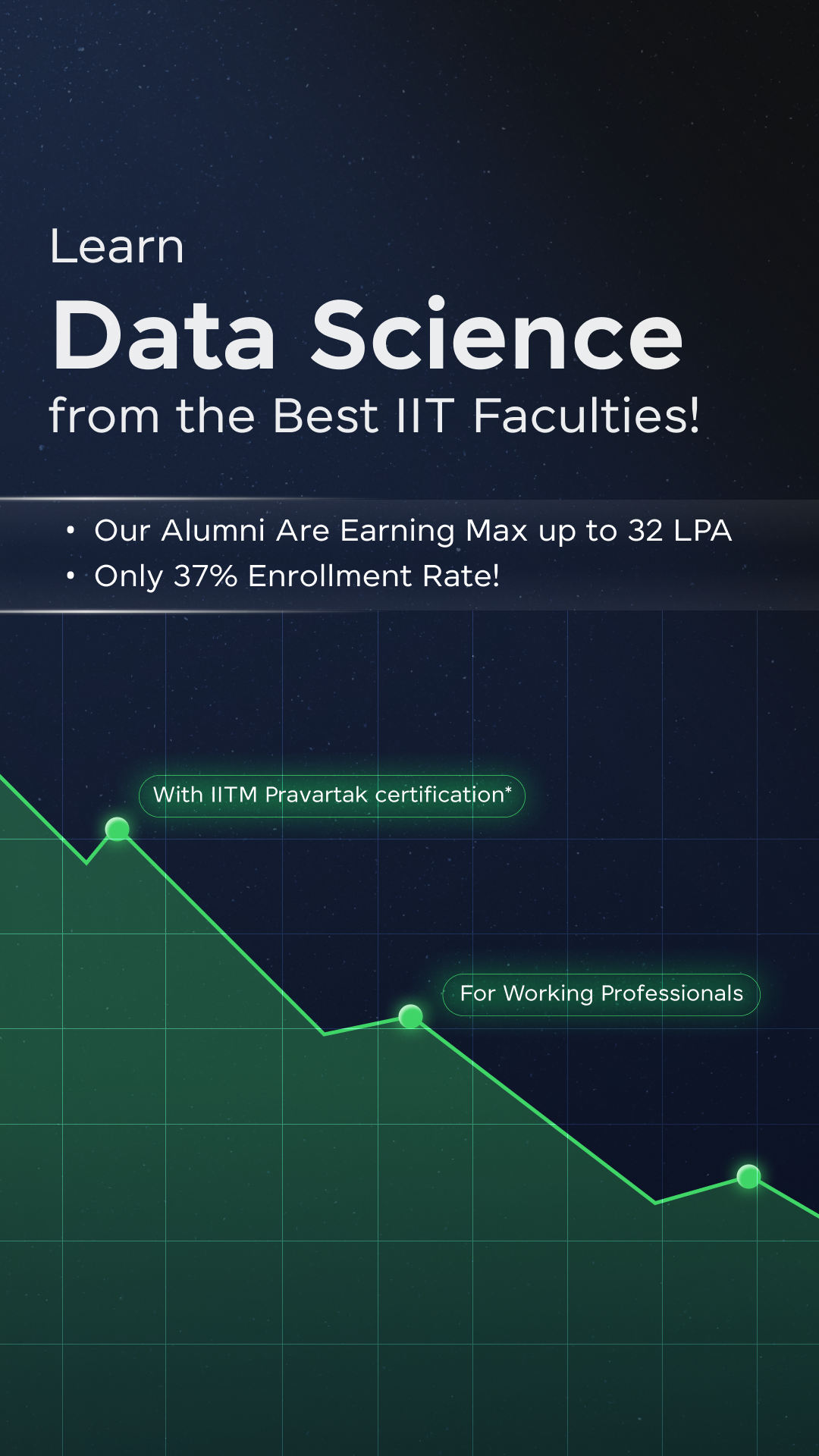




















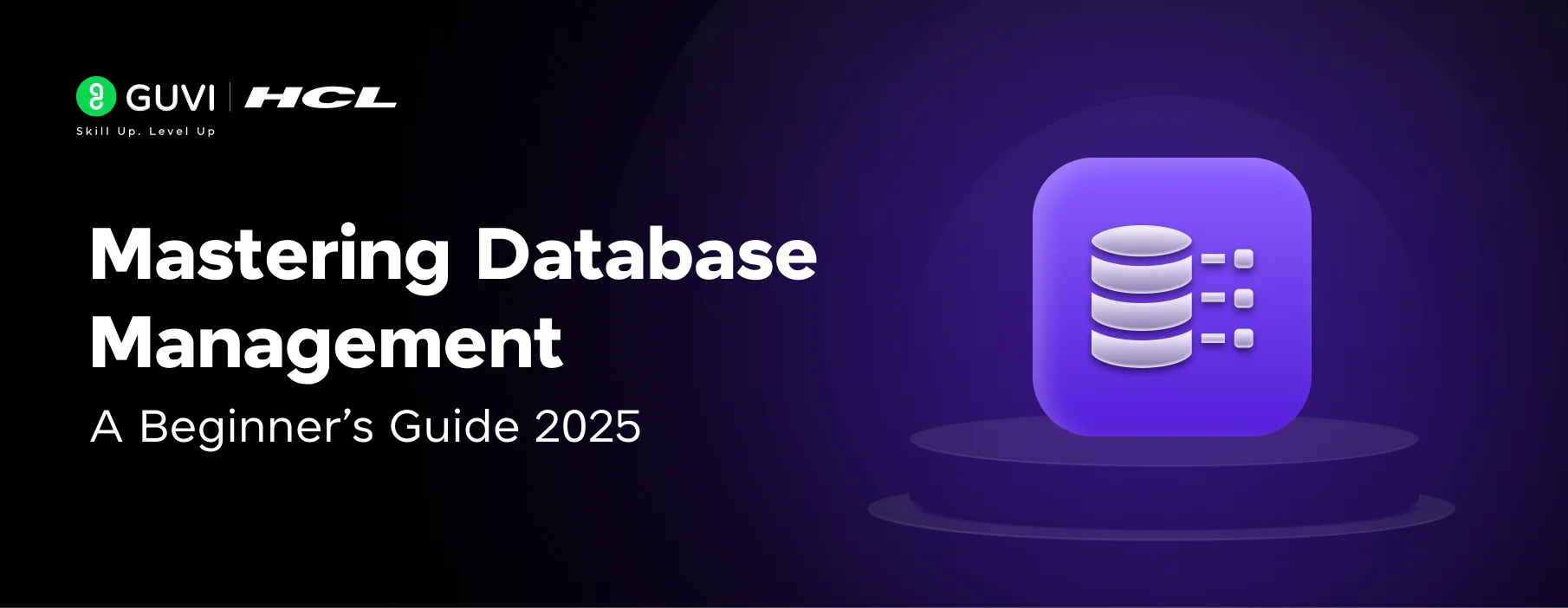
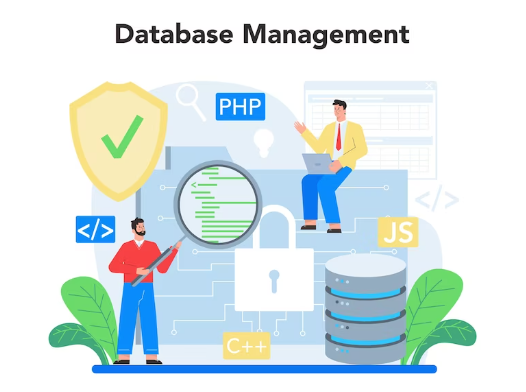

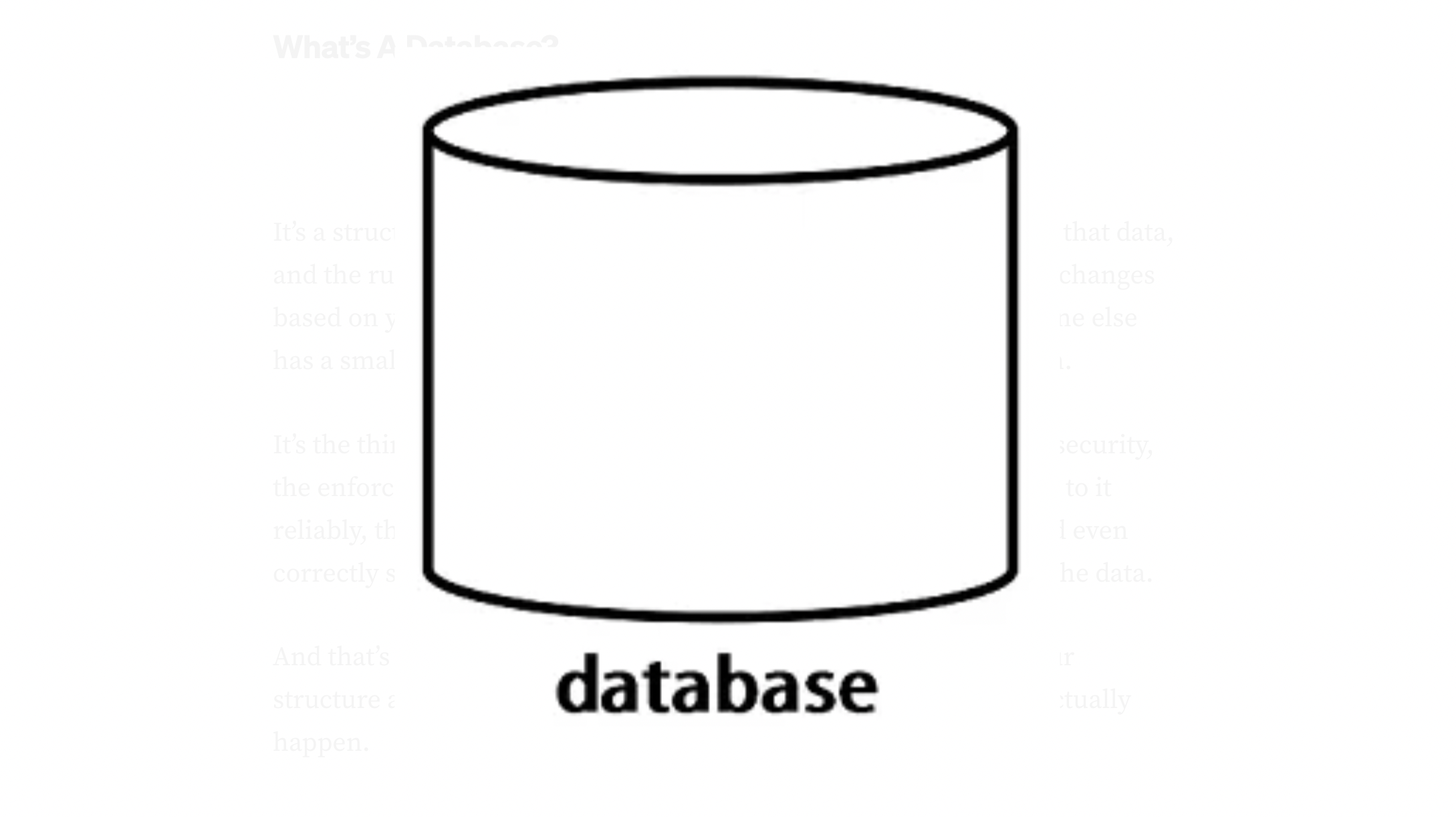





Did you enjoy this article?